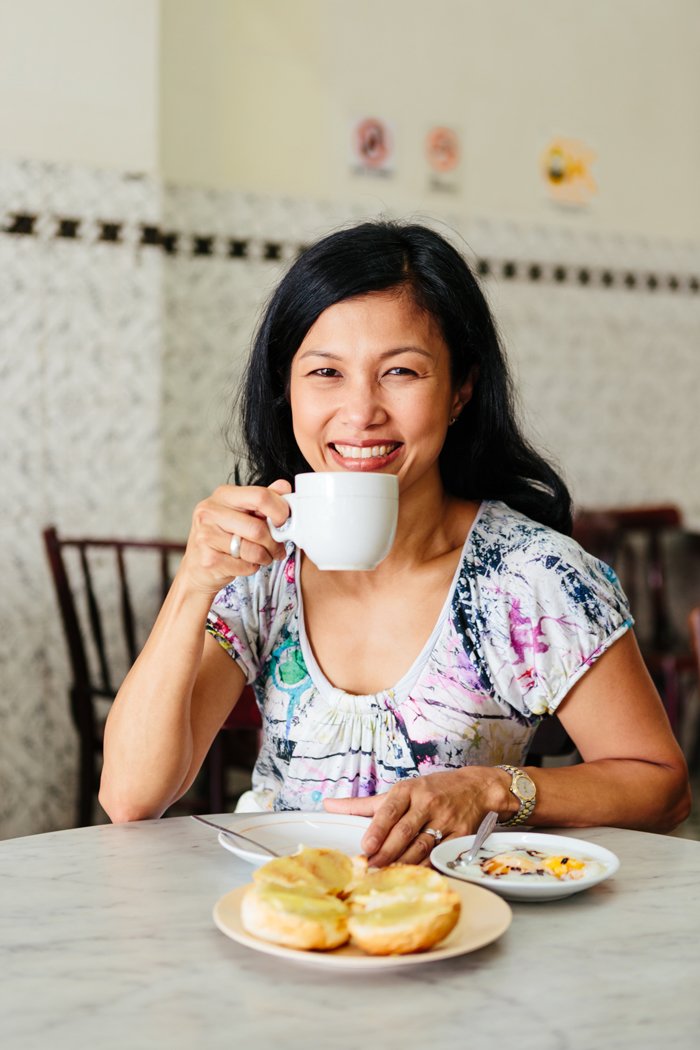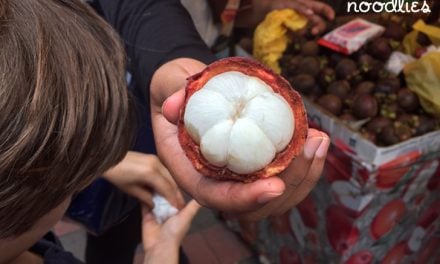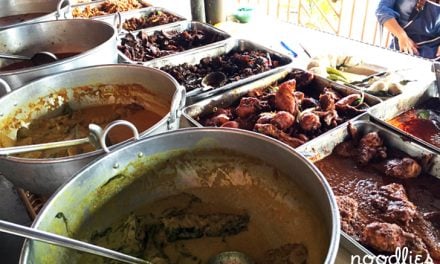Royal Palace, Gold and Jade, Pagoda and food under the neons
Most people have heard of Mandalay; mainly from the 1926 movie On the Road to Mandalay, which was inspired by Rudyard Kipling’s poem Mandalay, first published in 1892. Though many less people know it’s located in Myanmar, in fact this central Myanmar city is the country’s second largest.
Artists have also adapted Kipling’s poem into song, but Oley Speaks’ On the Road to Mandalay sung by Australian bass-baritone, Peter Dawson’s is probably the most well known. Frank Sinatra also covered it (watch below).
Mandalay is an economic and cultural hub of Myanmar. It was the last royal capital before the British sent King Thibaw into exile on 28 November 1865 at the conclusion of the Third-Anglo Burmese War. It’s a highly Chinese city, of the 1m population some 40% are Chinese (half of those from Yunnan province), there’s also a sizeable community of Indian Burmese. Today, it’s more ‘mordern’ than say, historic Bagan. Many men here wear jeans instead of the usual longyis found elsewhere in Mayanmar.
It’s an easy city to navigate, the streets are in a grid format, numbered from east to west, 1st to 49th and north to south, 50th and higher. What’s not easy is the lack of taxis on the street, so you’ll need to book a taxi which is hired by the hour (around 8,000 kyat/hr) to take you to your destination, wait, and take you back.
And there’s no shortage of things to do, especially if you’ve been to one too many pagodas already.
Mandalay Royal Palace
The last Royal Palace is an expansive place with some 40 timber buildings. The throne room is stunning with its soaring multi-tiered golden roof. Climb the external spiral staircase of the awkward looking round watchtower to get a bird’s eye view. Of course, it’s bare feet in the compound so make sure you bring sensible shoes that you can slip on and slip off. Also be warned, the wooden flooring between the buildings are ageing and broken in places and in some places there are protruding nails.
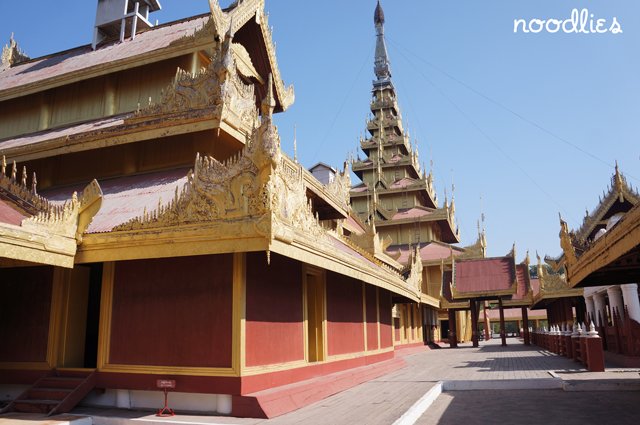
Mahamuni Pagoda
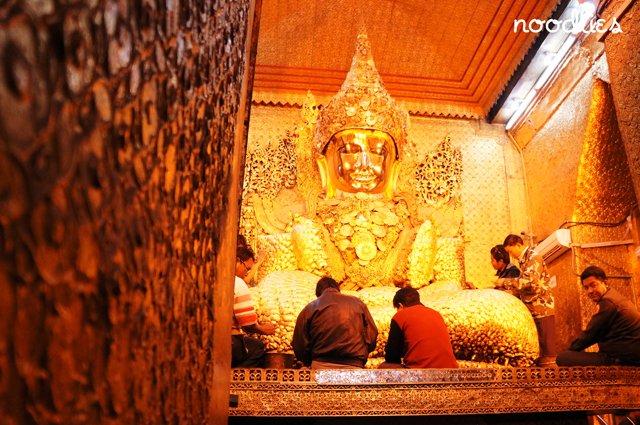
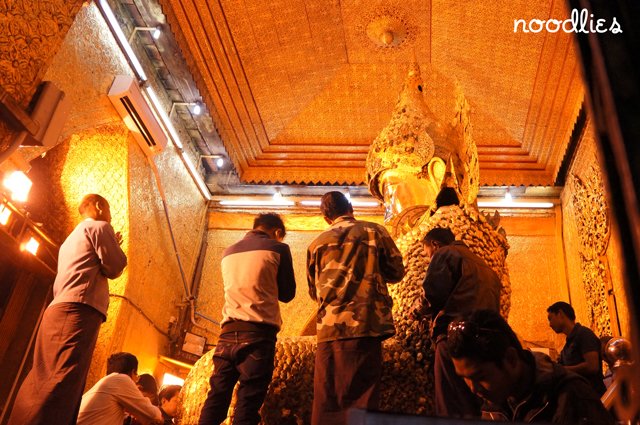
The main feature of this crazily buzzing pagoda is the 13ft high golden Buddha statue, the locals believe it’s over 2,000 years old. People come to make offerings and apply small squares of gold leaf all over the gleaming seated Buddha statue, so much as been applied over the years that the statue is covered in a six inch thick layer of pure gold. the only exception is that gleaming, broad Buddha face which is polished daily at 4am.
The Buddha is approached through long concrete passageways from different directions (so make sure you remember which passageway you enter by). They’re packed with stalls selling brass replicas of the golden Mahamuni Buddha in all sizes and other religious and non-religious statues. It’s the best place to buy statues and they’re good to bargain. Noodlies picked up at 50cm replica of the Mahamuni Buddha for $US50, a crazy bargain. Watch the noodlies video below and you’ll see what I mean.
Gold-Pounders’ District
Most of the one inch square gold leaf sheets worshipers attach to the Buddha at Mahamuni Pagoda are painstakingly pounded for hours in one of over 70 workshops on 36th street between 77th and 79th streets. The larger workshops welcome tourists and have English staff to explain the laborious process. The rhythmic, clang-clang of the hammering is oddly hypnotic.
Night Market
The Night Market in Mandalay is unremarkable for tourist shopping, it’s a very local market experience where young people head to buy the latest korean-eque fashion that’s made in China, or swap and buy second had local language books. There are some stalls selling longyis but they’re no cheaper than elsewhere, you’ll get more choice in nearby Zeigyo shopping centre.
It is however, excellent for local street food. Noodlies experienced it all from a bowl of mohinga, an iced yogurt drink, sweet sticky local cake, to the excellent pork fest below.
It’s really simple, squat down on a plastic kid’s stool and pick food on the stick of your choice. The stall owner cuts new bits of meat when the skewers are running low or you can request from the chunks of pork meat and offal displayed. It’s dipped in a couple of sauces, which look spicy and salty – they’re not, though it’s still very tasty. For extra bite raid, the fresh garlic, chilli bowl – one bite of meat to a bite of garlic and chilli. When finished, pay for the number of skewers you’ve gobbled up.
This is street food its best, under the blue neon.
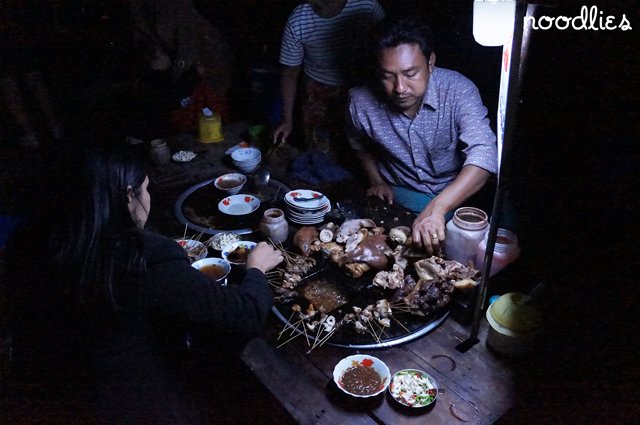
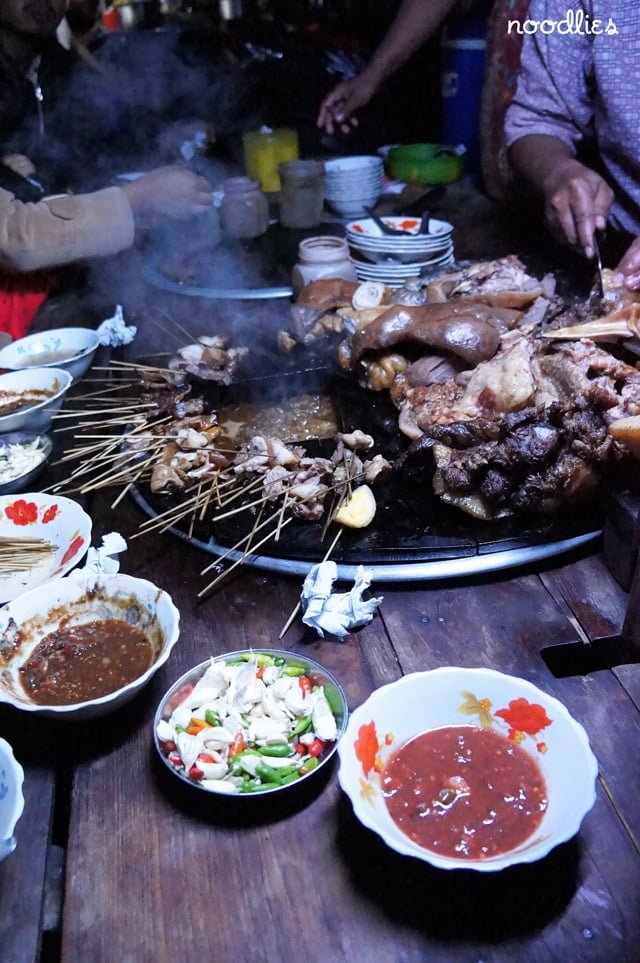
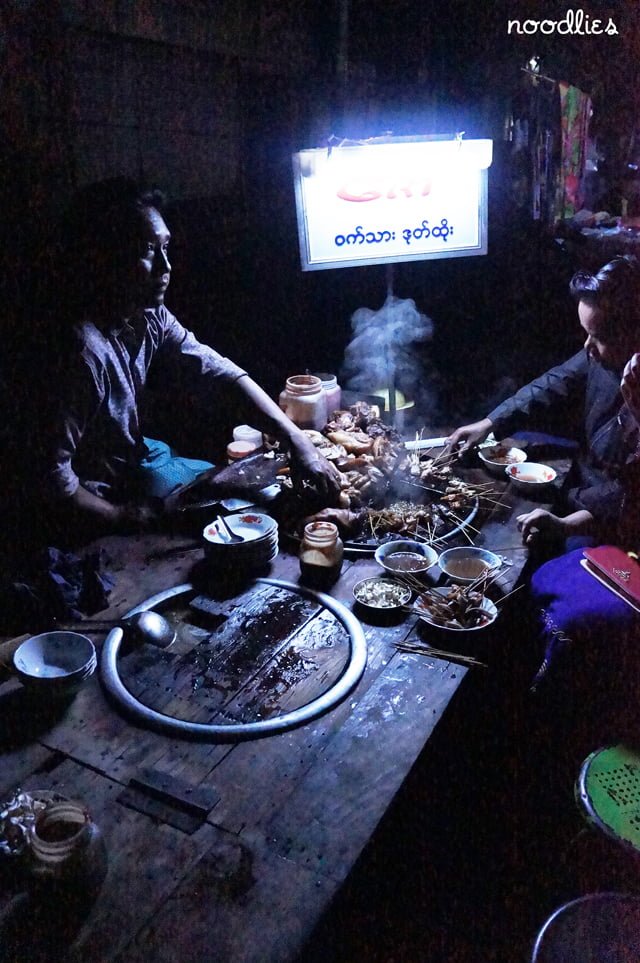
Jade Market
Myanmar is known for quality jade. The locals, and surprisingly the men, love trading Jade. As you can see in the noodlies video above, the Jade Market in Mandalay is a hive of frenetic commercial activity. The traders sit in endless rows waiting for business, though no jade is visible. It’s a spectacle, but the activity is mainly amongst locals. By the entrance you’ll see other stalls selling jade and marble objects which is more accessible for tourists.
On the Road to Mandalay
Hopefully, Mandalay is now on your ‘map’ and no longer just a song or movie that’s based, somewhere in Asia. It’s different to both Yangon and Bagan. Mandalay is worth a visit, there’s lots to see and do and you may walk away with a golden Buddha statue or two.
This unforgettable noodlies, Sydney food blog experience is thanks to the lovely folks at Cathay Pacific and Dragon Air.


